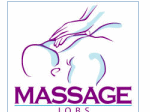The Benefit of Being in Pain - A Massage Therapist's Unique Journey through Injury, Pain and Recovery
Life Changing Moment
In June 1997, I was in a near fatal car accident two years after graduating from massage therapy school. Prior to the accident, I considered myself a knowledgeable and effective massage therapist because I had over 1000 hours of education, an externship with six OB/GYN doctors working with ladies who had high risk pregnancies in their last trimester and graduated with a 4.0 GPA. The injuries I sustained from the accident kept me out of work for nearly four years and during the recovery process, I thought I would not regain enough strength in my legs to return to my career and passion of massage therapy.
The Long Road Back
After several surgeries, countless hours of physical therapy and a drive to get my life back fully, I was able to return to massage therapy in 2001 working as a subcontractor for medical rehabilitation facility. I worked along side medical doctors, chiropractors, physical therapists and occupational therapists. The benefit of my car accident was that I personally had experienced physical pain and trauma to almost every area of my body. Because I knew what the pain felt like, I was able to relate more to the patients we saw and was able to concentrate on all areas of their pain and help reduce recovery time back to wellness.
Muscle Therapy
I knew that it was important to work with the areas of trauma by “listening” to the muscles surrounding the trauma site first because these muscles were in protection mode to protect from further injury. Because these muscles were hypertrophic (increased in size) or in a state of constant contraction, it was extremely important to not do deep work quickly. It was extremely important to relax the superficial muscles slowly with light to medium myofascial release techniques, moderate trigger point therapy and gentle passive stretching to these muscles. An easy way to tell if I was going too deep or going too quickly was to watch for unintended flinching from the patient or increased or decreased breathing. All of these were signs to decrease the pressure and simply let the muscles relax on their own.
In addition, I learned that it is crucial to address the origin and insertions of the muscles before addressing the muscular belly. This was easy to do when I considered the individual muscles like a rubber band. If a rubber band is stretched, the bulk of the pressure would appear to be in the middle of the rubber band, but in actuality it is both of the ends that are creating the pressure. Relax one or both ends, and the pressure disappears. So, when I took the pressure off the origin and the insertion, it was always much easier to make the belly of the muscle relax and it would relax much faster than it would if I would address the belly first.
Finally, it was crucial to address both the protagonist muscles (the mover muscle) as well as the antagonist muscles (the relaxer muscles) in order to minimize or eliminate pain in areas of trauma. When any muscle contracts, there is another muscle or muscle group that has to relax. For example, if the biceps brachaii is contracting, the triceps brachaii has to relax in order for the biceps to do its job. Therefore, if someone came in with hamstring problem, it was equally important to address the quadriceps. Because the hamstring was injured, the quadriceps would have to work harder. In this situation, it was also crucial to address the gluteus muscle group, again because these muscles were having to compensate for what the hamstrings were unable to do while injured.
The Benefits of a Massage Therapy Career
Because of my own muscular trauma, I was able to effectively help thousands of clients reduce recovery time, reduce or minimize pain and help heal muscular trauma in a way that was comfortable for the patient during and after each session. Even though I would not wish my accident to happen to me, it enhanced my skills and my 18 year career because it increased my empathy for each individual I have worked with over the years and it has helped with the therapist/client bond. In essence, my car accident made me one of the best therapists in my area.
If you enjoyed this article, please spread the word...
Article written by:
 |
Kris Lane Co-Owner & LMT A+ Massage Pros: Patients Above Profits Louisville, KY [ Get More Information on Author Kris Lane ] |



